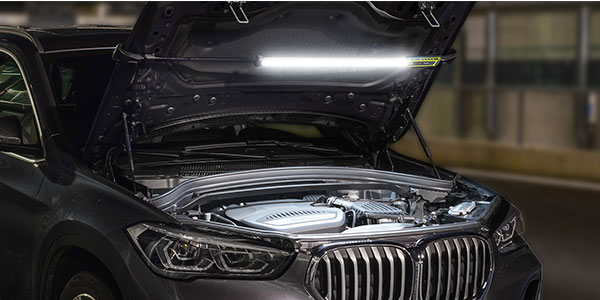Tire Changer Q & A
We talk to Pete Liebetreu of Hunter Engineering on Tire Changers
This month we talk to Pete Liebetreu, tire changer product manager of Hunter Engineering, on the future of the market and how shops can get the most out of this vital piece of equipment for most undercar shops.
BRAKE & FRONT END: With Michelin giving up on selling its PAX system to OEMs and other tire makers going to self supporting sidewalls to make a run flat tire, how will these changes influence the tire changer market in years to come?
Pete Liebetreu: It’s going to drive the market upwards. You need a high capability tire changer to handle run flats. If a shop even wants to service many normal vehicles, such as Toyota minivans, they will need a high capability tire changer. Maybe not the highest-level machine, but certainly something with a basic helper or bead press system.
B&FE: In the past 15 years, how has the footprint of the tire changer evolved to handle a changing vehicle parc? How should shop owners reconfigure their tire changing area?
PL: Plan for more space. High capability tire changers have helper systems. These helper (or bead press) systems take up more space and the tire changers are typically heavier. It is not unusual for a high capability tire changer to weigh in the neighborhood of 1,000 lbs. The popularity of trucks with relatively easy tires was masking how much more challenging car tires are getting. Now that the shift to trucks and SUVs is reversing, shops will see the average tire jump in difficulty. On the plus side, they will be lighter!
B&FE: What are the most common misconceptions people bring with them when it is time to buy a new tire changer?
PL: That they can get away with the same equipment they bought last time. Aluminum rims are the norm. Low profile is the norm. You need a tire changer with at least some type of helper (or press) system.
B&FE: How is ROI measured when purchasing a new tire changer?
PL: It is very difficult to do a forward looking ROI. High capability tire changers still only change tires and because that is simply a built-in cost to selling tires it makes it difficult to build a traditional ROI. What you need to do is justify the cost by having a product that doesn’t damage tires and wheels. Drivers and shops can feel that pain with the cost of some of these more expensive wheel assemblies.
B&FE: What are the most common user errors when using a tire changer?
PL: Going too fast and not feeding the tire into the drop center. This has been essentially the same number one problem for forever. The problem is that modern tires and wheels are so much more difficult to feed into the drop center. It used to almost happen by itself or with a shove with your hand. Now you need multiple helper (press) systems on the more difficult tires.
B&FE: Your new Auto34 tire changer is described as a hands off machine. Is this for safety, higher mechanical force or speed?
It is hands off the tire for two reasons. First, the patented tool head does a better job than a bead lever in grabbing the tire and demounting it from the rim. Second, because the tool head can generate much more force to pull those difficult beads over without the strain (on operator and tire) usual caused by using a lever. The rest of the process is also hands off as a by-product of making the most difficult part easier.
What we did that was unique with this tire changer, though, was to not only make it operate with controls but also operate simply. It would have been easy to design a system that had 10 buttons or switches, but we worked harder and made all the basic operations work with three switches and one rotation pedal. That means that even though it is a very sophisticated machine, it is pretty easy to walk up to and start changing any tire.












